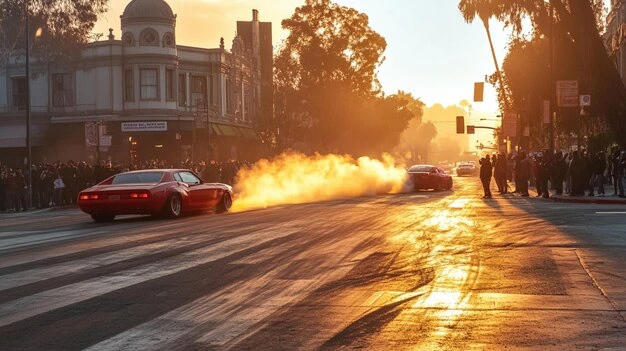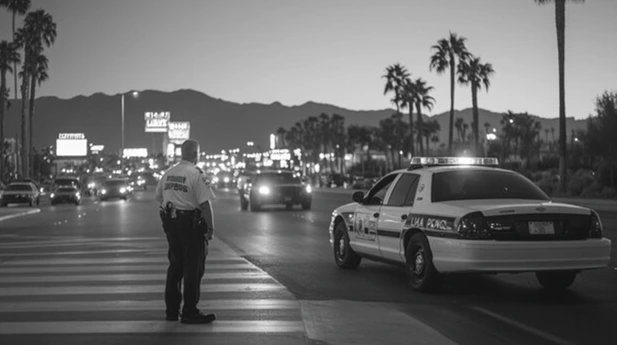In a dramatic and controversial move, former President Donald Trump has ordered the deployment of 2,000 National Guard troops to Los Angeles amid a wave of protests over recent federal immigration raids. The decision has reignited tensions between federal and state governments, brought concerns about civil liberties to the forefront, and stirred strong reactions from immigrant communities, civil rights groups, and political leaders across the spectrum.
The protests began after Immigration and Customs Enforcement (ICE) conducted a series of large-scale operations across the Los Angeles area, detaining more than 100 undocumented individuals. Demonstrators quickly took to the streets, calling the raids unjust, inhumane, and politically motivated. With crowds growing and tensions rising, the federal government responded with force, prompting a new round of public debate about federal authority, immigration enforcement, and the militarization of domestic issues.

ICE Raids Spark Outrage in Immigrant Communities
The situation in Los Angeles escalated rapidly following ICE’s surprise raids on businesses and homes in early June. These operations, conducted without the cooperation or prior notification of local law enforcement, swept through several neighborhoods with high immigrant populations. Dozens of families were affected, many of whom claim they were given no legal explanation or opportunity to defend their residency status before their loved ones were taken into custody.
Immigrant advocacy groups and community leaders condemned the raids as both heavy-handed and strategically timed, arguing they were designed to stoke fear rather than enforce the law. In areas like East LA, Boyle Heights, and South Central, local residents organized peaceful protests, vigils, and sit-ins. Within days, these demonstrations grew to thousands of people occupying public streets, city buildings, and major intersections.
While most protests began peacefully, clashes between demonstrators and law enforcement became more frequent, particularly as law enforcement tried to disperse crowds using tear gas and rubber bullets. Protesters responded by blocking freeways and staging walkouts, particularly near government buildings and federal courthouses.
Trump’s Federal Response: A Show of Force
In response to the growing unrest, Donald Trump authorized the deployment of 2,000 National Guard troops to the city under federal control, a move made possible under Title 10 of the U.S. Code, which allows the president to take command of state forces during national emergencies. Trump claimed the protests had become a matter of national security, referring to them as “domestic disruptions orchestrated by radical activists.”
The National Guard’s arrival brought military vehicles, armed personnel, and patrol checkpoints to various neighborhoods throughout Los Angeles. This marked one of the most militarized responses to civil unrest in California since the 1992 Rodney King riots. Trump’s administration defended the action as necessary to “restore law and order,” stating that local leadership had failed to contain what they described as violent uprisings.
In addition to the National Guard, active-duty Marines from nearby bases were placed on high alert, prepared to assist if the situation escalated further. Critics say this kind of response is disproportionate and raises constitutional concerns regarding the Posse Comitatus Act, which limits the use of federal military forces in domestic policing roles.

California Leadership Pushes Back
The federal move did not go unchallenged. California Governor Gavin Newsom strongly condemned the deployment, accusing the Trump administration of inflaming the situation instead of calming it. “This is not how we build trust, this is how we destroy it,” Newsom said in a public statement. He argued that California’s local agencies were fully capable of managing the protests and maintaining peace without the need for federal troops.
Los Angeles Mayor Karen Bass echoed this sentiment, stating that the presence of the National Guard had turned a tense but manageable situation into a crisis. “Our city is not a war zone,” she said during a press conference. “These are our neighbors, our workers, our families — not enemies of the state.”
Many city council members and California lawmakers supported their stance, pointing out that past instances of federal overreach in protest situations had only led to more violence and resentment. Several legal experts also questioned the constitutional basis for the deployment, suggesting that lawsuits could soon follow.
The Human Impact and Unfolding Protests
Beyond the political battles and legal debates, it’s the people on the ground who are most affected. Communities are grappling with fear, uncertainty, and in many cases, displacement. Families have reported being separated during ICE operations, with little information about the whereabouts of detained relatives. Local shelters and churches have begun offering emergency support services, including legal aid, food distribution, and housing for those affected.
Protests continue to surge across the city, though the tone has shifted in recent days. Some demonstrations have grown more confrontational in response to the visible presence of the National Guard. Reports of curfews being enforced, protestors being detained without charge, and minor injuries from crowd control measures have added to the overall tension.
Despite this, thousands continue to gather peacefully, demanding reform to immigration laws, an end to aggressive enforcement tactics, and greater protection for undocumented individuals who have lived in the country for years. Artists, students, faith leaders, and families have all joined in to raise their voices, and social media has played a key role in organizing and spreading awareness of ongoing events.
Conclusion
The deployment of National Guard troops to Los Angeles amid immigration protests marks a pivotal moment in the national conversation about immigration policy, federal authority, and civil liberties. For many, it represents a dangerous overreach of power — one that prioritizes control over compassion and order over justice.
As protests continue and the legal and political battles unfold, the eyes of the nation remain on Los Angeles. The outcome of this confrontation may very well shape how future administrations deal with civil unrest and how far the government can go in its pursuit of immigration enforcement.
Table of Contents
Carlos Alcaraz’s Commanding Performance at the 2025 Roland Garros: A Deep Dive – trendsfocus
Trump to Send National Guard to LA to Quell Immigration Protests: Live Updates – The New York Times